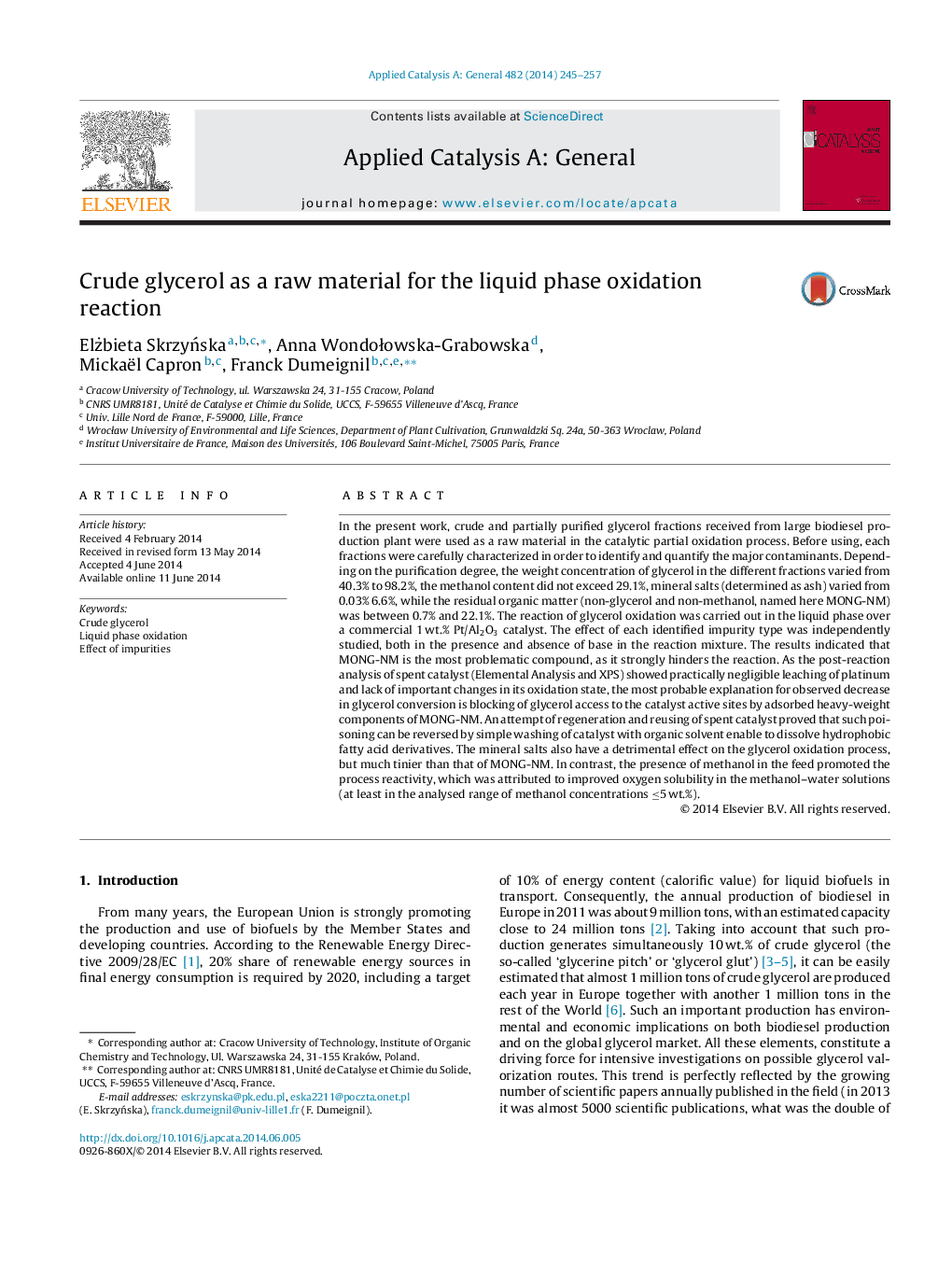| Article ID | Journal | Published Year | Pages | File Type |
|---|---|---|---|---|
| 39606 | Applied Catalysis A: General | 2014 | 13 Pages |
•Oxidation of crude glycerol fractions was investigated over Pt/Al2O3 catalyst.•The effect of each impurity was independently studied.•Mineral salts have a small detrimental effect on the oxidation process.•MONG-NM strongly hinders the reaction rates.•Up to 5 wt.% of methanol in feed enhances the process reactivity.
In the present work, crude and partially purified glycerol fractions received from large biodiesel production plant were used as a raw material in the catalytic partial oxidation process. Before using, each fractions were carefully characterized in order to identify and quantify the major contaminants. Depending on the purification degree, the weight concentration of glycerol in the different fractions varied from 40.3% to 98.2%, the methanol content did not exceed 29.1%, mineral salts (determined as ash) varied from 0.03% 6.6%, while the residual organic matter (non-glycerol and non-methanol, named here MONG-NM) was between 0.7% and 22.1%. The reaction of glycerol oxidation was carried out in the liquid phase over a commercial 1 wt.% Pt/Al2O3 catalyst. The effect of each identified impurity type was independently studied, both in the presence and absence of base in the reaction mixture. The results indicated that MONG-NM is the most problematic compound, as it strongly hinders the reaction. As the post-reaction analysis of spent catalyst (Elemental Analysis and XPS) showed practically negligible leaching of platinum and lack of important changes in its oxidation state, the most probable explanation for observed decrease in glycerol conversion is blocking of glycerol access to the catalyst active sites by adsorbed heavy-weight components of MONG-NM. An attempt of regeneration and reusing of spent catalyst proved that such poisoning can be reversed by simple washing of catalyst with organic solvent enable to dissolve hydrophobic fatty acid derivatives. The mineral salts also have a detrimental effect on the glycerol oxidation process, but much tinier than that of MONG-NM. In contrast, the presence of methanol in the feed promoted the process reactivity, which was attributed to improved oxygen solubility in the methanol–water solutions (at least in the analysed range of methanol concentrations ≤5 wt.%).
Graphical abstractFigure optionsDownload full-size imageDownload high-quality image (144 K)Download as PowerPoint slide
